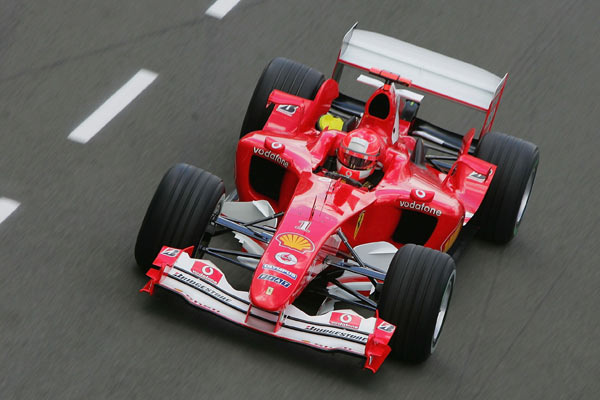Front and Back Wings

Photo courtesy: Ferrari / Shell racing
This picture gives an idea how the front and back wings are designed.
The front wing is the first thing that comes in contact with oncoming airflow, therefore it is designed to both give the vehicle downforce directed at the front tires and direct the airflow over the body. The front wing assembly directs air toward the under-body of the chassis, toward the radiators, intakes, and turbos, and over and around the tires. Any change in the airflow over the front wing will change the overall airflow over the entire vehicle. Therefore, it is important for engineers to consider how this might impact the car’s overall performance. With optimum settings for the front wing, they can produce about 1500 lbs of downforce (Yager).

Photo courtesy: McLaren / Mercedes Benz racing
The rear wing is designed to provide an enormous downforce focused to the rear tires. This gives the vehicle great traction for acceleration and turning. However, by creating more downforce by the wing, it also creates more drag. Therefore, engineers try to design the wings for the best drag/downforce compromise. This can vary depending on track conditions, and racing conditions. Optimum wings can create as much as 3000 lbs of downforce. Due to the fact that airflow becomes more turbulent as it travels toward the rear wing, it is not as efficient as the front wing, yet it produces up to twice as much downforce(Yager).